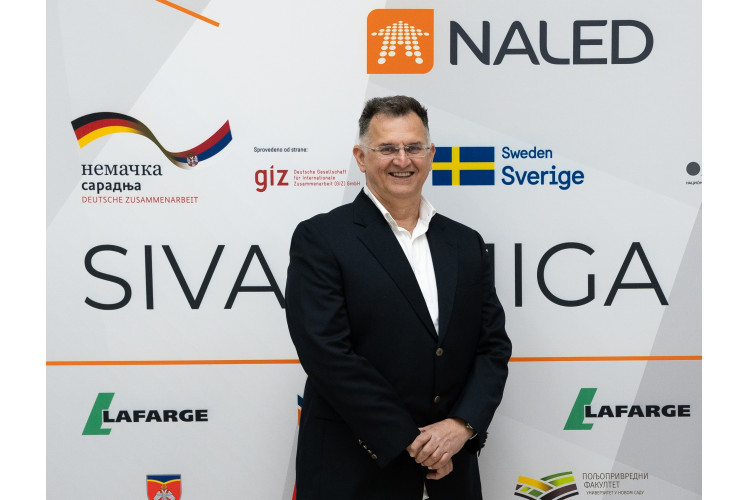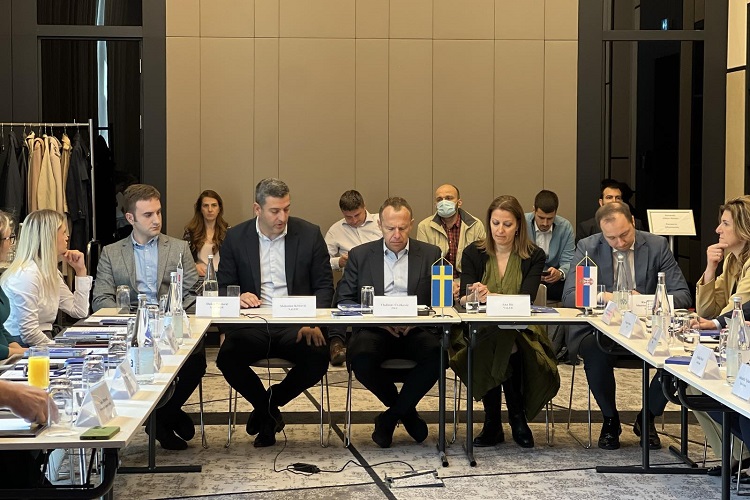EU tax on carbon dioxide emissions - threat or opportunity for the Serbian economy?
The European Union, accounting for nearly 60% of Serbia's total exports last year, is its largest trading partner. Starting January 1, 2026, in accordance with the Carbon Border Adjustment Mechanism (CBAM) regulation, tariffs will be imposed on carbon dioxide emissions for products entering the markets of European countries. This will directly affect six industries - cement, iron and steel, electricity, aluminum, fertilizers, and hydrogen - but the consequences will inevitably be felt across the entire Serbian economy. Could these new Brussels rules, besides posing a threat, also present an opportunity for the affected sectors to preserve and increase competitiveness in the EU market?
NALED's Environmental Protection Alliance will be the primary platform in the coming period to prepare the Serbian economy for the new EU carbon pricing mechanism, define proposals for assisting affected industries in preserving their production capacities, enhance the work of national institutions, and introduce the CBAM concept into domestic legislation. The aim of regulatory reform efforts is to collaborate with representatives of institutions and industries affected by CBAM regulations to find the best solutions that will reduce CO2 emissions and protect the domestic market in line with European practices.
Major corporate systems such as the Holcim Group, including Lafarge Serbia, are obligated to report their total carbon dioxide emissions to EU regulatory bodies, while financial markets continuously monitor and analyze actions aimed at reducing CO2 emissions.
- This means that CBAM is not a matter of choice but a priority for every company listed on the stock exchange and another indicator for potential investors deciding to invest in an industry burdened by CO2 regulatory requirements. Companies are not seeking subsidies or any material support, but urgent support is expected from Serbian government regulatory bodies to implement key measures ensuring the heart of the Serbian economy continues beating after January 2026, says Dimitrije Knjeginjić, director of Lafarge Serbia.
He points out that while the EU continuously refines mechanisms to help industries reduce CO2 emissions and protect their markets, Serbia allows unchecked imports of products with the highest carbon dioxide emissions, often of dubious origin, undermining efforts by domestic producers to reduce CO2 emissions.
- This market reality is completely contrary to the EU's strategy for permanently reducing greenhouse gas emissions. Besides the obligation to apply all EU rules to enable Serbian goods producers to export their products to the European market, identical rules must be introduced for all importers of products to the Serbian market subject to CBAM, our interlocutor stresses.
Otherwise, Knjeginjić warns, the Serbian market will be flooded with products that can no longer find a place in the EU market due to CBAM regulations, leading to seismic market disruptions where the domestic steel, cement, and artificial fertilizer industries would be wiped out. He notes that the cement industry is responsible for about 7-8% of total global CO2 emissions and faces various social and technical challenges in implementing decarbonized and circular economy practices.
- NALED's collaboration with key industrial stakeholders can contribute to the most important common goal - preserving and enhancing the competitiveness of the Serbian economy, including the cement industry. A well-prepared economic environment will not only preserve jobs in the industry but also create opportunities to increase their number. Creating a national regulatory system that enables energy-intensive industries to respond to CBAM, reduce their GHG emissions, is one of the biggest challenges for decision-makers in Serbia, Knjeginjić emphasizes.
To adapt the cement industry as quickly and efficiently as possible to the new economic circumstances driven by CBAM regulations, Knjeginjić lists five essential measures: ensuring availability of alternative raw materials that reduce CO2 emissions, allowing imports of waste for energy purposes as permitted by all neighboring countries, restricting imports of goods with a higher carbon footprint compared to those produced in Serbia, adopting a special legal framework for industries affected by CBAM regulations, and implementing identical CO2 emission rules applied within EU countries (monitoring, reporting, verification, trading, and taxation of imports).
The cement industry represents the best EU practice for using alternative fuels and sustainable waste disposal. Estimates suggest Serbian companies could use over a million tons of construction waste as clinker production raw material and mineral additives for cement production, significantly reducing CO2 emissions.



